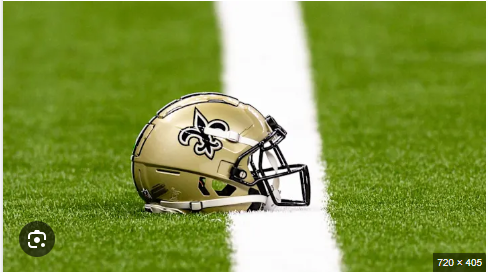The 2025 NFL Draft is fast approaching, and the New Orleans Saints currently hold the ninth overall pick. For the first time in a long while, they’re in a strong position to target a quarterback in the opening round—something they haven’t done since taking Archie Manning back in 1971. Recently, there’s been plenty of chatter linking them to Colorado quarterback Shedeur Sanders.
In this three-round mock draft, we’re working around a scenario where the Saints trade up to secure their quarterback of the future.
TRADE: Round 1, Pick 5 – Shedeur Sanders, QB, Colorado
There’s been speculation that teams like the Browns and Giants could make a move for Sanders, but in this particular mock (using PFF’s draft simulator), he slipped outside the top three. Here, the Saints trade up with the Jaguars to grab Sanders at No. 5. The deal required giving up their No. 9 pick, next year’s first-rounder, and a fourth-rounder in 2026.:no_upscale()/cdn.vox-cdn.com/uploads/chorus_asset/file/25940304/2191725434.jpg) Opinions among fans are divided on this move. Personally, I’m not sold on trading up for Sanders. If he’s still on the board at nine and they like him, go for it—but sacrificing a future first-round pick feels like too much. That said, if they’re committed to drafting him, moving up may be their only option.
Opinions among fans are divided on this move. Personally, I’m not sold on trading up for Sanders. If he’s still on the board at nine and they like him, go for it—but sacrificing a future first-round pick feels like too much. That said, if they’re committed to drafting him, moving up may be their only option.
Sanders has several solid traits—he’s accurate, but doesn’t have elite arm strength or standout athleticism. He’s got the tools to grow into a quality NFL quarterback, but if you’re giving up two firsts, you’re expecting a Pro Bowl-caliber player. I’m not convinced he’ll reach that level—but time will tell.
Round 2, Pick 40 – Trey Amos, CB, Ole Miss
In the second round, the Saints address the defensive side of the ball by selecting their only defender in this three-round mock. While cornerback isn’t their top defensive need, I wasn’t thrilled with the available defensive line prospects, and I’m high on Trey Amos as a player.
Amos had an outstanding 2024 campaign at Ole Miss, allowing just a 51.6% completion rate, 280 yards, and two touchdowns, while recording three interceptions and 10 pass deflections. He did this against top-tier competition, making his performance even more impressive. I saw him live at LSU last season, where he gave up only two catches on nine targets for 29 yards and snagged an interception.
If there had been better defensive linemen on the board, I would’ve leaned that way—but in this simulation, Amos stood out as the best defensive talent available. And for a team like the Saints, they can’t afford to be too selective
